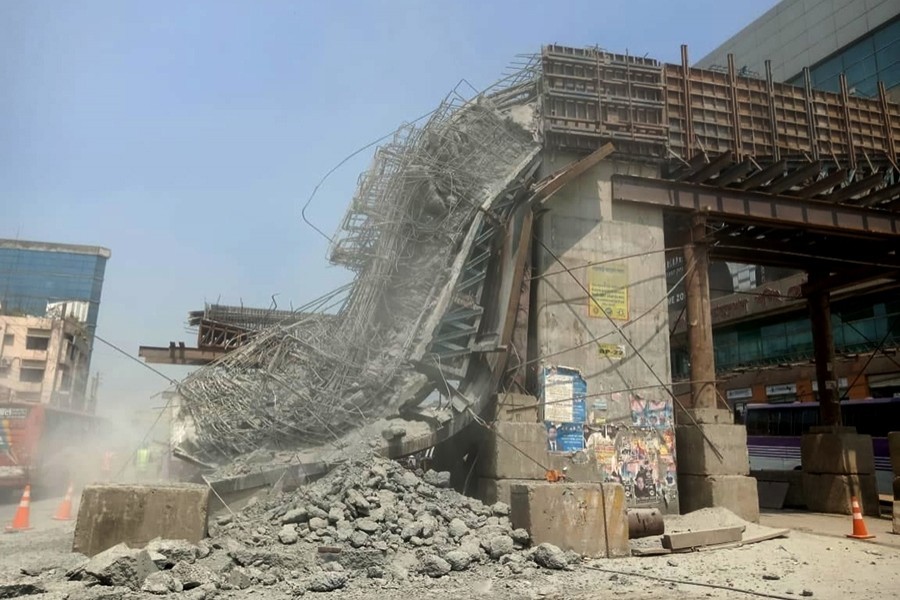The collapse of a girder and a pier cap in separate incidents at different Bus Rapid Transit (BRT-3) construction sites on the same day within six hours looks somewhat coincidental. But this is no coincidence. The accident involving the girder collapse happened at the time of installing it on two pillars near the airport. Reportedly, the launching girder which is a special type of gantry crane was being operated on a supporting structure. With the supporting structure giving in, the girder fell on it and its chain reaction precipitated the disaster in which five workers -- three Chinese and three Bangladesh nationals -- were injured. In the second accident that took place near Abdullahpur area, a truck is reported to have hit the pier cap earlier prompting its collapse. Fortunately, no one was injured here.
It is not for the first time that a girder has collapsed. The first such incident happened at the foot overbridge near the Science Laboratory and the second one in Chittagong at the time of construction of the flyover there. The third such accident occurred at the time of construction of a segment of a flyover near Malibagh, Dhaka. It appears, no lesson was learnt from the earlier accidents. A probe committee has been formed to find the cause of the BRT girder collapse. As for the cause of the breakdown of the pier cap, moulded the night before, is there no need for any investigation? If a truck hit it, causing its collapse, will it withstand a similar or greater impact when the structure consolidates? Happily mega projects like the Padma Bridge has not reported any such major incident so far. The lifting of giant segments of the bridge by monster cranes operated from vessels was a precision act.
Then where things go wrong in cases of girder installation needs to be brought under closer scrutiny. In fact, something is wrong with the planning of projects. Only days before a leading Bangla contemporary reported that the project titled 'Dhaka City Neighbourhood Upgrading Project' worth Tk 8.8 billion was undertaken two years back without any plan whatsoever by the Dhaka South City Corporation. This is, however, not the only such project where money is squandered or not utilised well. Reports are carried in both electronic and print media on useless projects. Plans of two bridges now under construction on the river Turag have been found faulty because of the latter's lower height. Wonder of wonders, construction work of at least one is being carried on despite the fact that it will have to be dismantled. Then there are bridges but no link roads in several places all across the country. Even the height of the approach rail line to the Padma Bridge needed readjustment.
Are all such structural errors or weaknesses engineering omissions or a lack of knowledge? Some are definitely not deliberate but a large number of the infrastructure are ill-planned with a suspected ulterior motive or shabbily constructed with an eye on making as much profit as possible? Why should bridge or culverts give in immediately after construction or the carpeting of roads develop cracks or cave in within days or months? Things need to be streamlined and those responsible for such malpractices must be held accountable for their misdeeds.


